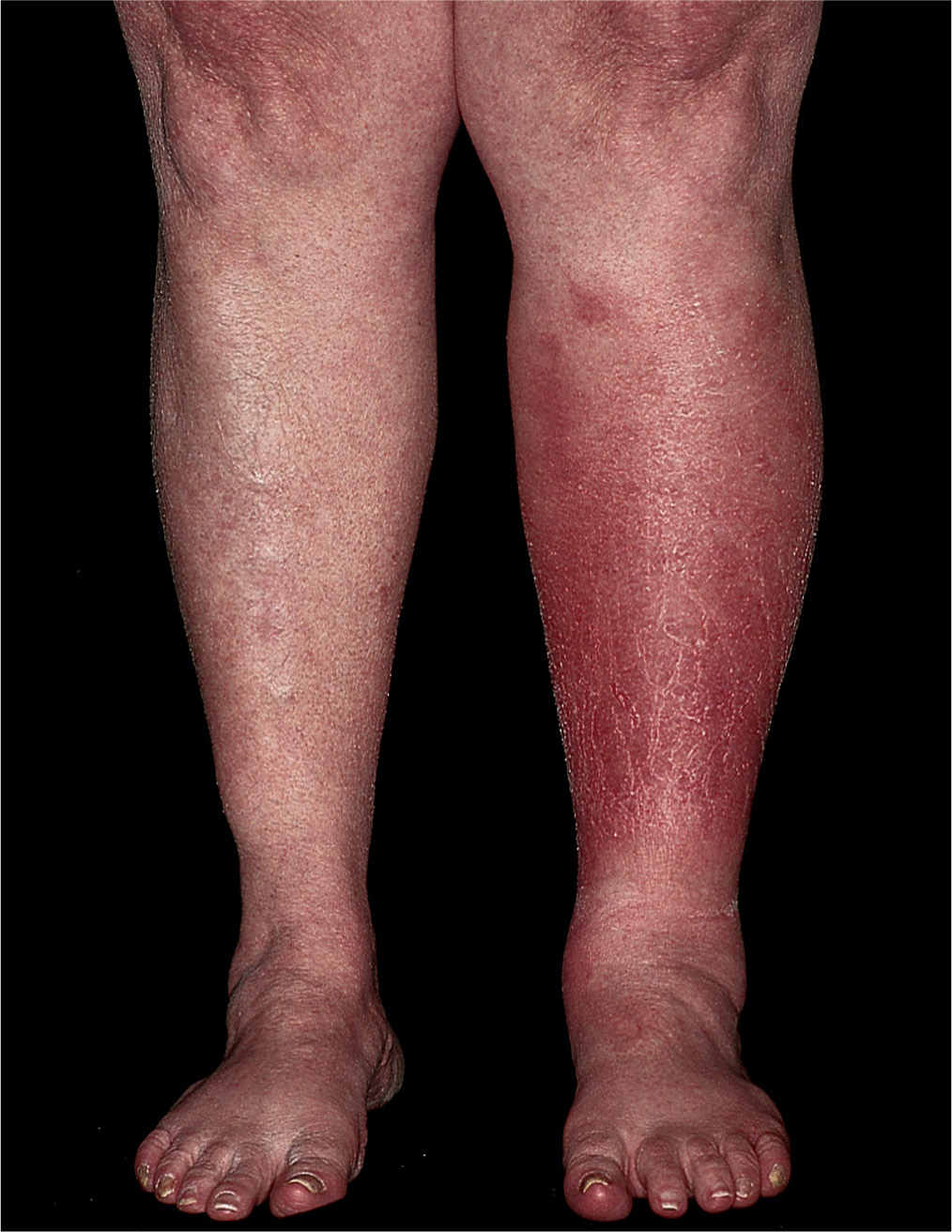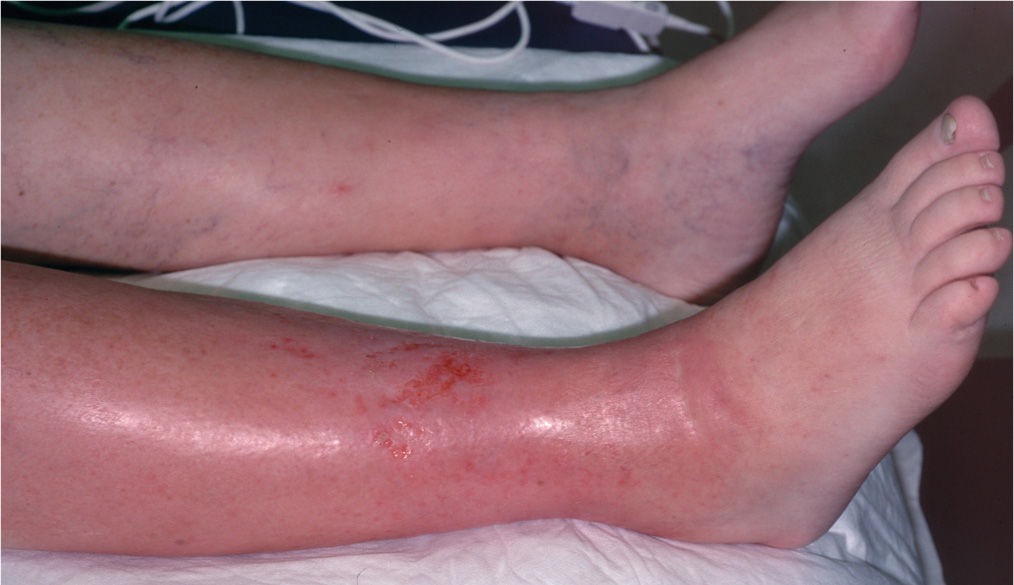DERMATOLOGIC DISEASES
What is the most likely diagnosis?
a. Erysipelas
b. Complicated cellulitis
c. Necrotizing fasciitis
d. Pyoderma gangrenosum
e. Lymphangitis
Answer b. Complicated cellulitis
Cellulitis is nonnecrotizing inflammation of the skin and subcutaneous tissues of the skin. It occurs because of a breach in the skin, which commonly can occur from self-inoculation with bacteria. Common breaches of the skin are puncture wounds, cuts, and insect bites. Erysipelas is an infection of the subcutaneous fat, and necrotizing fasciitis presents with a skin infection with severe pain out of proportion to examination findings. Pyoderma gangrenosum is seen commonly in patients with inflammatory bowel disease. Lymphangitis is an infection of the lymphatics caused by streptococcal species.
Staphylococcus aureus creates a yellowish gold pigment.
S. aureus has coagulase in its cell surface.
Coagulase “melts” into tissues to damage them.
The five skin infections caused by streptococcal species are LINES:
Lymphangitis
Impetigo
Necrotizing fasciitis
Erysipelas
Scarlet fever
What is the best next step in the management of this patient?
a. Incision and drainage
b. Antibiotics
c. Surgical consult
d. All of the above
Answer d. All of the above
With a patient who presents with complicated cellulitis, also known as an abscess, the management involves incision and drainage by surgery to treat the underlying process. This is followed by starting targeted antibiotics that will treat the most common organisms and supportive care such as antipyretics.
The most common organism to cause cellulitis is S. aureus (methicillin-resistant S. aureus [MRSA] and methicillin-susceptible S. aureus [MSSA])
Oral antibiotics that cover MRSA and MSSA are:
• Clindamycin
• Doxycycline
• Trimethoprim–sulfamethoxazole
Ceftaroline is the only cephalosporin that covers MRSA.





